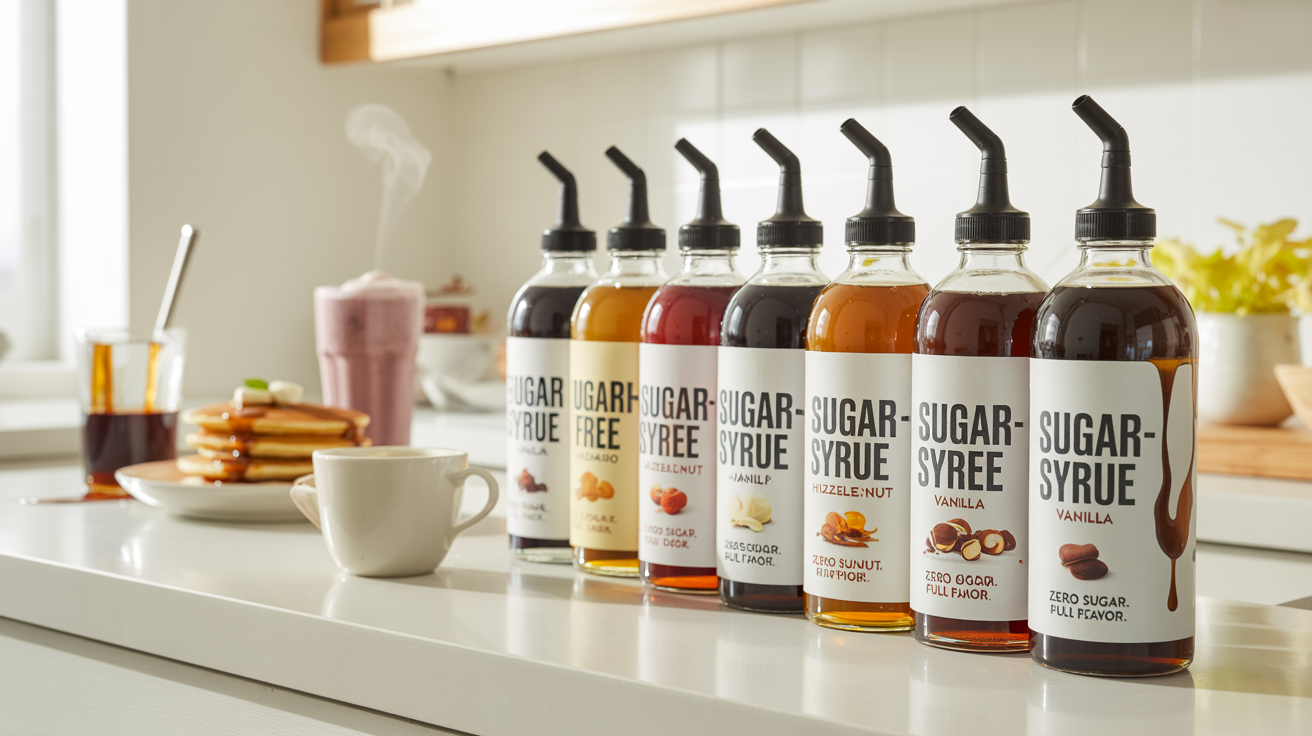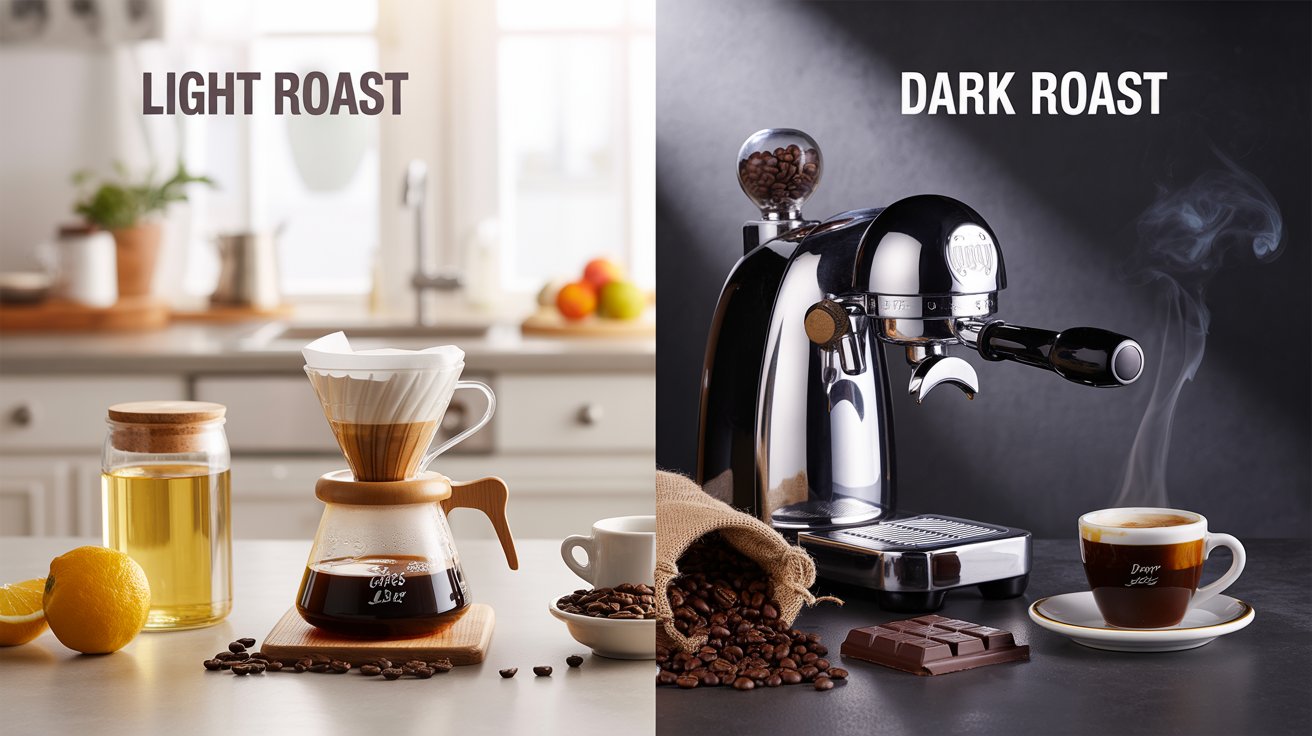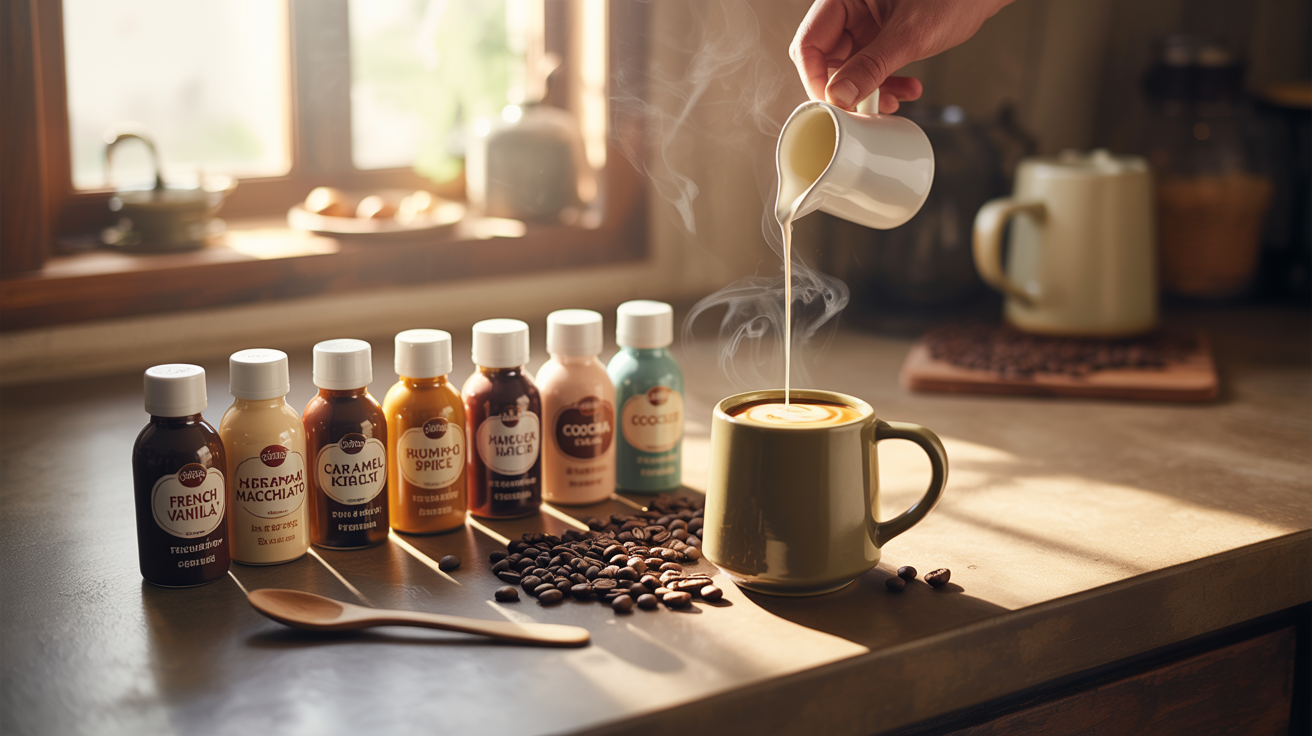Experience the Smooth Taste of White Coffee: Your New Favorite Drink! Experience the Smooth Taste of White Coffee: Your New...
Read MoreDiscover the Best Espresso Coffee for Rich, Bold Flavors
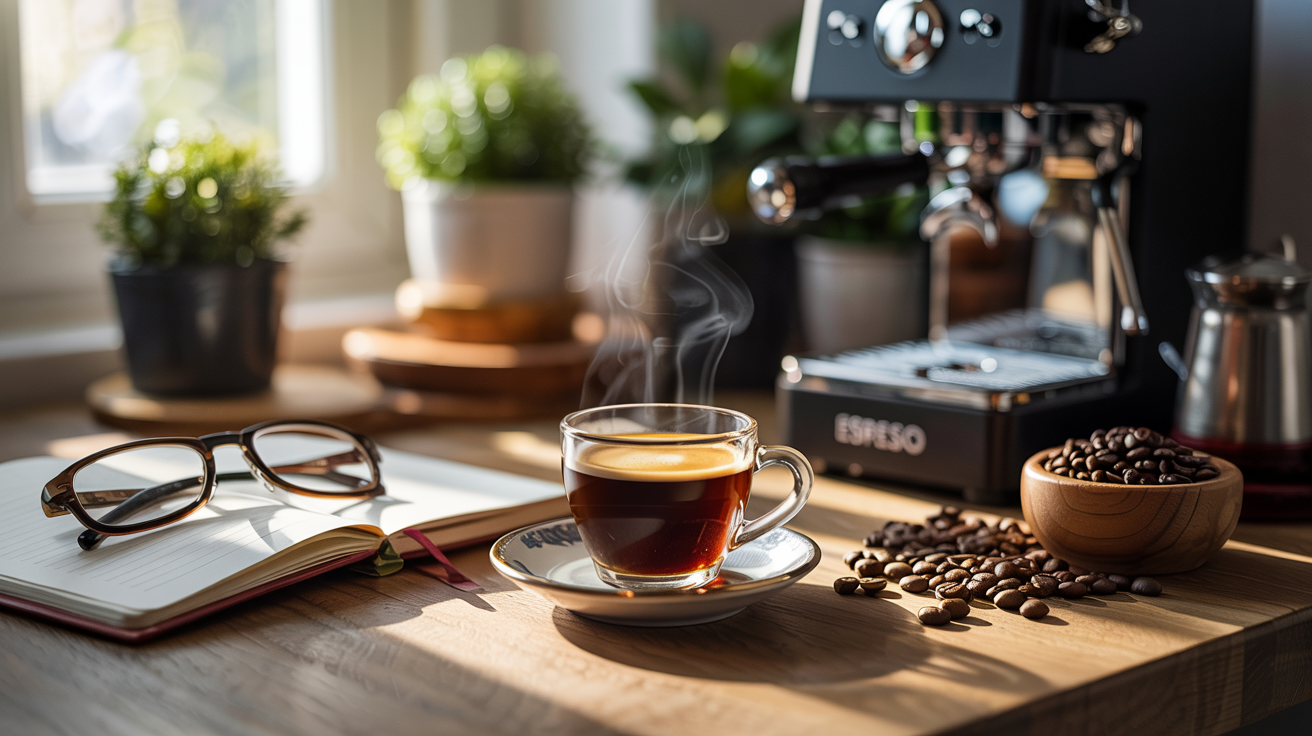
Master the Art of Espresso Coffee: Secrets to the Perfect Brew

Master the Art of Espresso Coffee: Secrets to the Perfect Brew


I. Introduction to Espresso Coffee
What Makes Espresso Unique?
Many coffee lovers favour Espresso Coffee for its rich flavour, pungent aroma and thick crema. Espresso is not the same as drip coffee, which we all know and love as regular coffee; it is made by high-pressure extraction using very finely ground beans, resulting in a small, concentrated shot of taste. The technique brings out some nuance, which explains why espresso serves as the perfect base for lattes, cappuccinos, and macchiatos. It’s a delicate and nuanced balance of temperature, grind size, and length of time you’re pulling the shot. Professional barista or home brewer, If you hit these points a great espresso coffee will always be something you get to drink.
Essential Tools for Brewing Like a Pro
Essential Tools to Brew Coffee Like a Pro Invest in a good espresso machine – to brew deep, aromatic shots of espresso coffee. Combine it with a burr grinder to obtain consistent grounds to extract the best flavor. A digital scale will help you measure precise ratios of coffee to water, and a gooseneck kettle will allow you to control pouring for pour-over methods. Use a milk frother to whip up creamy lattes and cappuccinos and a tamper to pack your espresso grounds evenly for an ideal brew. Besides the right tools, you can brew coffee at the quality level of a barista from the comfort of your home.
Surprising Health Benefits of Espresso Coffee You Didn’t Know
Why Espresso Can Be Good for Your Heart
Espresso coffee – which generally just feels like an a.m. pick-me-up – may actually support your heart health in some unexpected, surprising ways. Espresso, in moderation, has been shown to improve heart health by lowering inflammation, improving blood vessels, reducing cholesterol and blood pressure, and ultimately lowering the risk of heart disease. Unlike sugary drinks, espresso provides a low-calorie lift, including nutrients like magnesium and potassium. Read on to learn the health benefits of coffee you never knew, sip on it, and take care of your heart, shot by shot!
Boosting Focus and Energy Naturally
Leverage natural hacks to increase energy and focus. Epiphany: When you drink your cup of espresso coffee, you can thank the excellent caffeine content for helping you stay awake and alert all day long. Feed your brain: add foods high in nutrients like nuts, berries and leafy greens. Even mild dehydration can impair cognition. Exercise improves circulation, delivering oxygen and nutrients to your mind and body. Assist with mental clarity and stress-management by practicing mindfulness or meditation. And on the back end, sleep well to recover and sustain energy. These natural ways will keep your energy and focus burning bright all day!
Espresso vs. Regular Coffee: What’s Healthier?
Since espresso and regular coffee are known to have their own unique health benefits, you know what you need and prefer. Espresso coffee is a concentrated gem, delivering more energy in less liquid. It has antioxidants, which help in fighting free radicals and improve general health. Drip coffee, made in larger batches, often contains more caffeine per serving, which is ideal for all-day energy. Both are low calorie with high amounts of important nutrients such as magnesium and potassium. Therefore, the healthiest option is whichever you can tolerate and consume less of. Opt for coffee if you would like strong flavor in smaller quantities or regular coffee if you want a weaker coffee experience over a longer period.

The Beginner’s Guide to Crafting Café-Quality Coffee at Home
Choosing the Right Espresso Beans
The key to making café-quality coffee at home is selecting the right espresso beans. Use freshly roasted, high-quality beans to make the strongest impact and rich crema that make the perfect espresso. Select beans labeled “espresso roast” – usually medium to dark roast – for a rich, balanced flavor. Choose single-origin beans for unique flavor profiles or blends for a steady, universal cup. Complement the right beans with proper brewing, and a whole new luxury world forms. For beginners, nailing this step is key to successful café-worthy results. So what are you waiting for? Read the ultimate guide and become a coffee espresso master today!
Understanding Your Coffee Machine
Getting to know your coffee machine is one of the first steps in making great cups every day. From drip coffee makers to commercial espresso coffee machines, each machine works fundamentally differently. A great place to start: Understanding the temperature of water, grind size, and brewing time – three key components to getting the most flavor out of the beans. For espresso machines, the steam wand, tamper and shot timing help to make bold, rich coffee. Tip: Keeping it clean helps prevent residue and make sure that sweetness stays on point. Master your coffee machine’s settings and maintenance for café-quality brews, from espresso shots to full carafes, every morning.
Step-by-Step Brewing Guide
The key to mastering coffee is having great brewing steps. Start with fresh ground coffee beans, ideally the right kind for your cooking method – espresso coffee, pour-over, etc. It will help you determine the ideal coffee-to-water ratio for consistent flavor. Using a gooseneck kettle, heat just the right amount of water to 195–205°F. Rinse your filter or prepare your espresso portafilter and distribute the grounds evenly. For pour-over, circle the water around the beans to help them bloom properly. For espresso: tamp down firmly and pull for 25–30 seconds. Sip thick espresso or smooth pour-over, whatever your preference.
Pro Tips for a Barista-Style Finish
Get the espresso in a cafe barista style with these pro brewing tips. Begin with freshly ground, good-quality beans for the best flavor! An authentic espresso machine produces a rich and creamy shot of espresso coffee with a velvety crema. Practice steaming the milk for a latte&cappuccino into perfect micro foam. Use a digital scale, and keep your water at a consistent temperature (195 to 205 degrees). The tamper creates a necessary pressure that will make the espresso on the cup, and the art combined with the pressure demands a skilled hand. Keep your equipment in top shape with regular cleaning. With these pointers, you can make the most amazing coffee, like those in the best coffee shops every time.
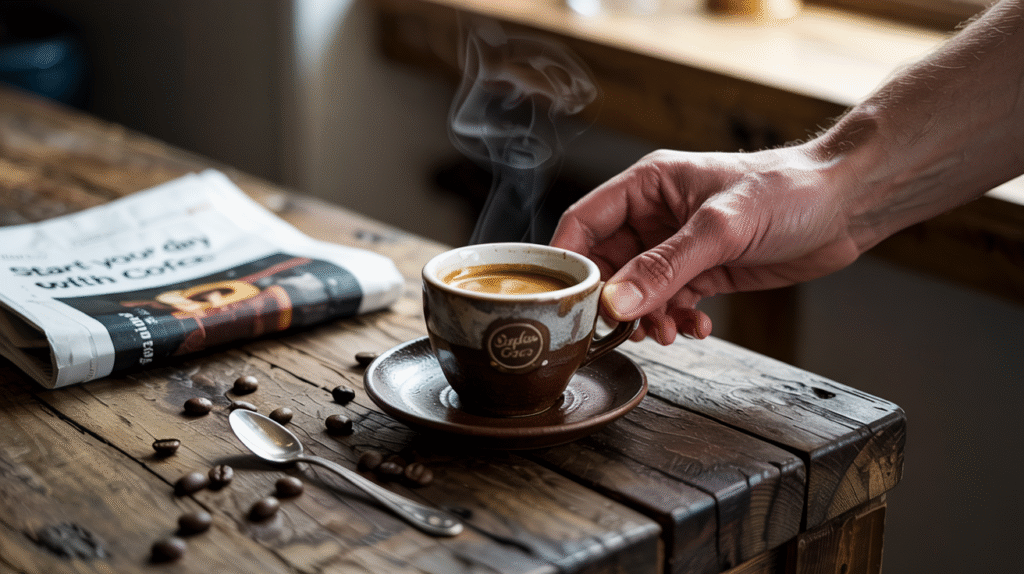
From Bean to Brew: The Journey of Espresso Coffee
Where Do Espresso Beans Come From?
Espresso beans are actually the same beans as regular coffee beans, but they are roasted and processed differently to achieve a rich, bold flavor. Where does espresso coffee come from? “From Bean to Brew” explains the journey across coffee-growing regions such as Ethiopia, Brazil, and Colombia. (The entity of coffee cherries is harvested, and its pulp is processed and sun-dried to obtain the beans inside.) They are also dark roasted to bring out their pungent flavor and aroma and make them perfect for espresso lover. They are finely ground after roasting for accurate brewing. From sourcing to brewing, every step of the way yields a bold, velvety espresso experience that coffee drinkers have come to love around the world.
How to Store Beans for Long-Lasting Freshness
How you store your coffee to keep it fresh is super important, especially with rich complex espresso coffee. Keep beans in an airtight container so they’re not exposed to air, moisture and light, all of which can degrade quality. Store the jar in cool dark place with out any light or heat, to retain the flavor. Do not refrigerate – the temperature difference will result in condensation. If you purchase in quantity, break the beans into smaller loads and freeze in sealed bags, defrosting portion sizes as necessary. Here are some ways to ensure your coffee beans stay fresher for long periods, and that you can brew a delicious cup every time.
To summarize, coffee espresso is a delicate drink that enchants coffee lovers all over the globe. Its distinct flavor and ideal concentration make it the best base for drinks like lattes, cappuccinos, and more. Good quality beans and the proper brewing steps make an espresso ideal. This culminates into an experience beyond taste. Espresso is an experience waiting to be had by both the social natural and the coffee connoisseur. It entangles and energizes you with the deep ecosystem of espresso coffee enthusiasts who greatly admire this mixture. Why delay it any further? Heart these wonders today!
Popular Posts
Cortadito Coffee: A Sweet, Bold Cuban Espresso Drink
Cortadito Coffee: Why This Cuban Drink Should Be Your Next Favorite Cortadito Coffee: Why This Cuban Drink Should Be Your...
Read MoreEspresso Beans: Find the Best Beans for Perfect Espresso
Boost Your Day with Instant Espresso: Quick & Delicious! Boost Your Day with Instant Espresso: Quick & Delicious! Introduction A...
Read MoreDecaf Coffee: Enjoy Rich Flavor Without the Caffeine Jitters
Health Benefits of Decaf Coffee: A Smarter Way to Enjoy Your Brew Health Benefits of Decaf Coffee: A Smarter Way...
Read MoreSugar Free Syrups: Sweeten Your Drinks Without the Calories
Sugar Free Syrup: Healthier Alternatives for Sweetening Your Drinks Sugar Free Syrup: Healthier Alternatives for Sweetening Your Drinks 1. Introduction:...
Read MoreChristmas Coffee: Festive Flavors to Warm Your Holiday
Christmas Coffee: Delight Your Guests with These Festive Drinks Christmas Coffee: Delight Your Guests with These Festive Drinks Introduction of...
Read More
I. Introduction to Espresso Coffee
What Makes Espresso Unique?
Many coffee lovers favour Espresso Coffee for its rich flavour, pungent aroma and thick crema. Espresso is not the same as drip coffee, which we all know and love as regular coffee; it is made by high-pressure extraction using very finely ground beans, resulting in a small, concentrated shot of taste. The technique brings out some nuance, which explains why espresso serves as the perfect base for lattes, cappuccinos, and macchiatos. It’s a delicate and nuanced balance of temperature, grind size, and length of time you’re pulling the shot. Professional barista or home brewer, If you hit these points a great espresso coffee will always be something you get to drink.
Essential Tools for Brewing Like a Pro
Essential Tools to Brew Coffee Like a Pro Invest in a good espresso machine – to brew deep, aromatic shots of espresso coffee. Combine it with a burr grinder to obtain consistent grounds to extract the best flavor. A digital scale will help you measure precise ratios of coffee to water, and a gooseneck kettle will allow you to control pouring for pour-over methods. Use a milk frother to whip up creamy lattes and cappuccinos and a tamper to pack your espresso grounds evenly for an ideal brew. Besides the right tools, you can brew coffee at the quality level of a barista from the comfort of your home.
Surprising Health Benefits of Espresso Coffee You Didn’t Know
Why Espresso Can Be Good for Your Heart
Espresso coffee – which generally just feels like an a.m. pick-me-up – may actually support your heart health in some unexpected, surprising ways. Espresso, in moderation, has been shown to improve heart health by lowering inflammation, improving blood vessels, reducing cholesterol and blood pressure, and ultimately lowering the risk of heart disease. Unlike sugary drinks, espresso provides a low-calorie lift, including nutrients like magnesium and potassium. Read on to learn the health benefits of coffee you never knew, sip on it, and take care of your heart, shot by shot!
Boosting Focus and Energy Naturally
Leverage natural hacks to increase energy and focus. Epiphany: When you drink your cup of espresso coffee, you can thank the excellent caffeine content for helping you stay awake and alert all day long. Feed your brain: add foods high in nutrients like nuts, berries and leafy greens. Even mild dehydration can impair cognition. Exercise improves circulation, delivering oxygen and nutrients to your mind and body. Assist with mental clarity and stress-management by practicing mindfulness or meditation. And on the back end, sleep well to recover and sustain energy. These natural ways will keep your energy and focus burning bright all day!
Espresso vs. Regular Coffee: What’s Healthier?
Since espresso and regular coffee are known to have their own unique health benefits, you know what you need and prefer. Espresso coffee is a concentrated gem, delivering more energy in less liquid. It has antioxidants, which help in fighting free radicals and improve general health. Drip coffee, made in larger batches, often contains more caffeine per serving, which is ideal for all-day energy. Both are low calorie with high amounts of important nutrients such as magnesium and potassium. Therefore, the healthiest option is whichever you can tolerate and consume less of. Opt for coffee if you would like strong flavor in smaller quantities or regular coffee if you want a weaker coffee experience over a longer period.

The Beginner’s Guide to Crafting Café-Quality Coffee at Home
Choosing the Right Espresso Beans
The key to making café-quality coffee at home is selecting the right espresso beans. Use freshly roasted, high-quality beans to make the strongest impact and rich crema that make the perfect espresso. Select beans labeled “espresso roast” – usually medium to dark roast – for a rich, balanced flavor. Choose single-origin beans for unique flavor profiles or blends for a steady, universal cup. Complement the right beans with proper brewing, and a whole new luxury world forms. For beginners, nailing this step is key to successful café-worthy results. So what are you waiting for? Read the ultimate guide and become a coffee espresso master today!
Understanding Your Coffee Machine
Getting to know your coffee machine is one of the first steps in making great cups every day. From drip coffee makers to commercial espresso coffee machines, each machine works fundamentally differently. A great place to start: Understanding the temperature of water, grind size, and brewing time – three key components to getting the most flavor out of the beans. For espresso machines, the steam wand, tamper and shot timing help to make bold, rich coffee. Tip: Keeping it clean helps prevent residue and make sure that sweetness stays on point. Master your coffee machine’s settings and maintenance for café-quality brews, from espresso shots to full carafes, every morning.
Step-by-Step Brewing Guide
The key to mastering coffee is having great brewing steps. Start with fresh ground coffee beans, ideally the right kind for your cooking method – espresso coffee, pour-over, etc. It will help you determine the ideal coffee-to-water ratio for consistent flavor. Using a gooseneck kettle, heat just the right amount of water to 195–205°F. Rinse your filter or prepare your espresso portafilter and distribute the grounds evenly. For pour-over, circle the water around the beans to help them bloom properly. For espresso: tamp down firmly and pull for 25–30 seconds. Sip thick espresso or smooth pour-over, whatever your preference.
Pro Tips for a Barista-Style Finish
Get the espresso in a cafe barista style with these pro brewing tips. Begin with freshly ground, good-quality beans for the best flavor! An authentic espresso machine produces a rich and creamy shot of espresso coffee with a velvety crema. Practice steaming the milk for a latte&cappuccino into perfect micro foam. Use a digital scale, and keep your water at a consistent temperature (195 to 205 degrees). The tamper creates a necessary pressure that will make the espresso on the cup, and the art combined with the pressure demands a skilled hand. Keep your equipment in top shape with regular cleaning. With these pointers, you can make the most amazing coffee, like those in the best coffee shops every time.

From Bean to Brew: The Journey of Espresso Coffee
Where Do Espresso Beans Come From?
Espresso beans are actually the same beans as regular coffee beans, but they are roasted and processed differently to achieve a rich, bold flavor. Where does espresso coffee come from? “From Bean to Brew” explains the journey across coffee-growing regions such as Ethiopia, Brazil, and Colombia. (The entity of coffee cherries is harvested, and its pulp is processed and sun-dried to obtain the beans inside.) They are also dark roasted to bring out their pungent flavor and aroma and make them perfect for espresso lover. They are finely ground after roasting for accurate brewing. From sourcing to brewing, every step of the way yields a bold, velvety espresso experience that coffee drinkers have come to love around the world.
How to Store Beans for Long-Lasting Freshness
How you store your coffee to keep it fresh is super important, especially with rich complex espresso coffee. Keep beans in an airtight container so they’re not exposed to air, moisture and light, all of which can degrade quality. Store the jar in cool dark place with out any light or heat, to retain the flavor. Do not refrigerate – the temperature difference will result in condensation. If you purchase in quantity, break the beans into smaller loads and freeze in sealed bags, defrosting portion sizes as necessary. Here are some ways to ensure your coffee beans stay fresher for long periods, and that you can brew a delicious cup every time.
To summarize, coffee espresso is a delicate drink that enchants coffee lovers all over the globe. Its distinct flavor and ideal concentration make it the best base for drinks like lattes, cappuccinos, and more. Good quality beans and the proper brewing steps make an espresso ideal. This culminates into an experience beyond taste. Espresso is an experience waiting to be had by both the social natural and the coffee connoisseur. It entangles and energizes you with the deep ecosystem of espresso coffee enthusiasts who greatly admire this mixture. Why delay it any further? Heart these wonders today!
Popular Posts
Light vs Dark Roast Coffee: Which One Is Right for You?
Light vs Dark Roast Coffee: What Every Coffee Lover Should Know Light vs Dark Roast Coffee: What Every Coffee Lover...
Read MoreDecaf Coffee: Enjoy Rich Flavor Without the Caffeine Jitters
Health Benefits of Decaf Coffee: A Smarter Way to Enjoy Your Brew Health Benefits of Decaf Coffee: A Smarter Way...
Read MoreChildren’s Coffee: A Kid-Friendly Coffee Alternative
Childrens Coffee That Supports Brain and Body Growt Childrens Coffee That Supports Brain and Body Growt Introduction: Understanding Childrens Coffee...
Read MoreCoffee Creamer Flavors for a Healthier Cup
Coffee Creamer Flavors with the Best Ingredients Coffee Creamer Flavors with the Best Ingredients 1. Introduction Brief overview of the...
Read MoreCoffee Specialist’s Guide to the Right Powder for You
Coffee Powder Guide: 7 Types Explained by Experts Coffee Powder Guide: 7 Types Explained by Experts 1. Introduction: Why Choosing...
Read MoreMexican Coffee: A Spicy, Sweet Coffee Experience
Mexican Coffee: The Rich Tradition of Flavor Mexican Coffee: The Rich Tradition of Flavor 1. Introduction to Mexican Coffee Brief...
Read More





